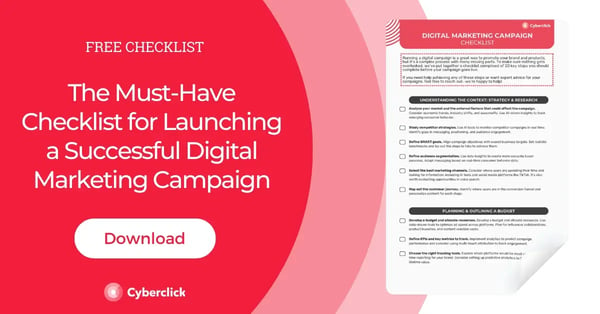By Lauren Pezzullo, on 27 June 2018
No matter what kind of business you’re in, the majority of your customers in today’s world are going to find you online. And that’s why your approach to digital marketing--how you present yourself, as well as how you communicate and entice potential customers--is a make or break situation.
This means you need to be smart about your plan and design your strategy based on data, trends, and insight. Here’s how to formulate a strong digital marketing strategy designed to attract loyal customers and improve business growth.

Analyze Your Current Numbers
You can’t make a good plan without knowing your own strengths and weaknesses.
That’s why the first crucial step in beginning your online marketing strategy is to analyze your current strategy so that you can identify places that need growth, gaps, as well as areas to eliminate.
Make a list of your company’s successes and failures if you need a specific place to start. Analyze your most productive month or quarter compared to the least productive, so you can spot some patterns as well, through Google Analytics.
To assess the effectiveness of your current SEO keyword strategy, measure your activity to those of your industry competitors using a tool like Google’s Benchmarking Reports or SEMRush. This is where you can find out which of their keywords are driving the highest search volume of organic traffic to their site and restructure your own keywords accordingly.
You can also compare both the organic and paid traffic of your top competitors to see how they’re what they’re going after in ads and how much they’re spending. This will help you find out how you stack up in comparison, where you should be more aggressive, and where you might be able to pull back a bit (for example, if their spend is much higher for a particular keyword that you’re not able to match).
This first step will lay a smart and solid foundation for yoFur digital marketing strategy from the ground up, whether you’re starting from scratch or simply reviving your outdated methods.
Plan Your Goals and Create a Calendar
Now that you know your strengths and weaknesses, it’ll be much easier and clearer to figure out your objectives and a realistic timeline. Here are some must-haves:
- Set up a collaborative calendar, like Google Calendars, so that you can easily share events, projects and meetings, as well as being able to keep track of employees’ schedules without having to constantly ask.
- Choose your quarterly and annual goals and KPIs you’ll be responsible for achieving—as well as those for individual team members and the team as a whole—and choose a strict timeline for each that’s shared with everyone and revisited on a weekly basis to measure progress. Google Analytics is the best and most user-friendly way to measure conversions, while Buzzsumo is ideal for social media and content metrics. This outline helps keep track of some of the analytics you’ll want to consistently track.
- Choose the strongest team and an aggressive but realistic timeline.
- Assess your company’s overall mission. This might sound oversimplified, but this is the philosophy of your business, and therefore the foundation your company is built upon. Your industry research might indicate that you need to sharpen the focus of your core statement. Or maybe the weaknesses you found in your current marketing plan mean a shift in your mission might be necessary in order to increase your overall success.
Increase Your Online Visibility
Even if you have profiles on every social media platform in existence, it’s not enough simply to have an online presence. Instead, you need to be active and consistent. Engagement is crucial for your online marketing strategy because you can attract likes and followers, but you can’t inspire loyalty to your brand without a sincere connection.
To attract potential customers among the fierce competition, make your social media and website/blog posting a daily habit. And while this is a great way to announce new products or prices from your brand, this is also the place to forge a connection with your customers to show them that you care.
Besides sharing helpful content with them, include CTAs to ask them questions and spur conversation in the comments and discussion threads. You’ll get a better understanding of your customer personas, as well as helpful feedback for your business.
To keep your social media presence consistent, use a tool such as Sprinklr or Sprout Social, that will allow you to plan and schedule your content in advance so that you can post multiple times a day with convenience.
You’ll also want to monitor the efficacy of your postings at least once a week, so that you can analyze patterns or weaknesses and make changes where necessary. You’ll also want to monitor the efficacy of your postings at least once a week, so that you can analyze patterns or weaknesses and make changes where necessary.
Discover Your Audience and Speak to Them Directly
There’s almost nothing more helpful in your online marketing strategy than defining the unique personas of your customers so that you can craft your content (as well as products and services) to their liking.
Of course, you probably already know your general audience. If you’re a maternity retailer, for example, you’ve got a pretty obvious and specific gender and age base. But your content and products need to address (and relieve) the pain points and challenges of a customer’s online buying journey, and knowing those means having a very specific understanding of exactly who they are and what they need.
So how do you figure out the goals and desires of these faceless customers?
- Use web forms or surveys on your site that ask important information like demographics, cost information, and motivation for a particular buying journey. You can also include ratings on your website to get honest and helpful feedback from potential customers who will be happy to express their buying desires.
- Pay attention to your site’s feedback on social media, or even ask your customers and potentials directly through a tweet or Facebook post. The anonymous nature of social media means you’ll get the honesty you need.
- Analyze your Google Analytics reports. These will tell you where and how customers found you, which keywords they searched, which of your blog posts they like best, and even how long they stay on certain areas of your site.
- Create your own buyer persona templates with these helpful tools.
Now that you’ve got your new strategy and goals in place, with a good team behind them, your plan is set for success but the hard work isn’t over. In today’s digital world, trends are constantly changing and that’s why the last piece of your strategy is to constantly monitor your efforts and look for ways to improve and expand. Finally, keep a persistent eye on your competitors so that you can keep up with trends and analyze what works for them, as well.

